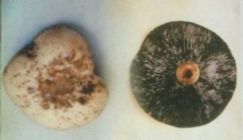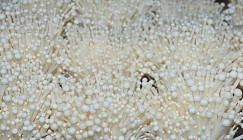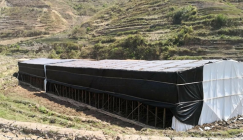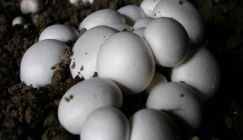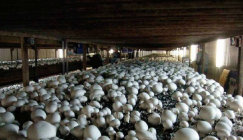1. Yellow-rot Disease:
Symptom: This kind of disease is common to see in the initial stage of sporocarps, afterwards spreads to the whole mushroom bodies, resulting in the stop state on mushroom bodies, finally turn yellow, soft and rotten.
Control methods:
A. During the fruiting period, when the temperature is higher than 18 degrees, be sure not to spray water directly on sporocarps, it is proper to spray on the ground and the surrounding walls to increase moisture.
B. During the fruiting period, be sure to strengthen the room ventilation and avoid too high temperature and humidity. Each time after you spray water, combine with the ventilation management and reduce the surface moisture on mushroom bodies so as to prevent bacterial diseases.
C. When you find any diseases, timely pick the infected bodies, then strengthen ventilation and prevent the transmission to other bodies.
2. Wilt Disease:
Symptom: Tiny king oyster mushrooms stop growing, become wilted and dead, finally turn yellow and rotten. This kind of phenomenon is mainly caused by high temperature (meaning higher than 22 degrees).
Control methods:
A. During the growth period of sporocarps, control the temperature to a range of 10-20 degrees, the highest temperature should not exceed 22 degrees. When you encounter high temperature, be sure to immediately adopt cooling measures.
B. When you find that tiny mushrooms have become wilted and dead, pick immediately in order to prevent bacterial reproduction and rotten bodies.
3. Misshapen Mushroom:
Symptom: sporocarps grow into irregular shapes, meaning misshapen state that devalues commodity values.
A. Arrange the fruiting season legitimately, control the fruiting temperature to a range of 13-20 degrees, be sure to let fruit under the temperature of higher than 20 degrees.
B. Strengthen the ventilation, guarantee the fresh air in mushroom house while avoiding too high concentration of CO2.
C. During the growth period of sporocarps, keep the relative air humidity to a range of 80-90% so as to meet the water conditions needed in the growth period of sporocarps.

 LATEST NEWS
LATEST NEWS
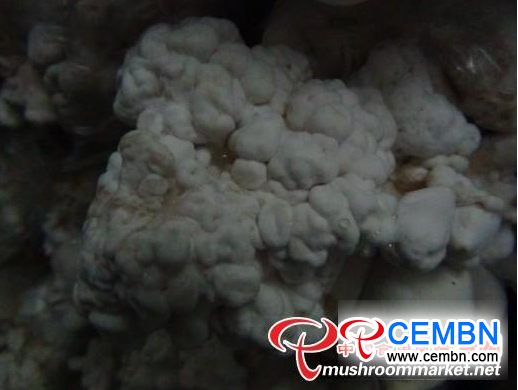
 MOST POPULAR
MOST POPULAR
